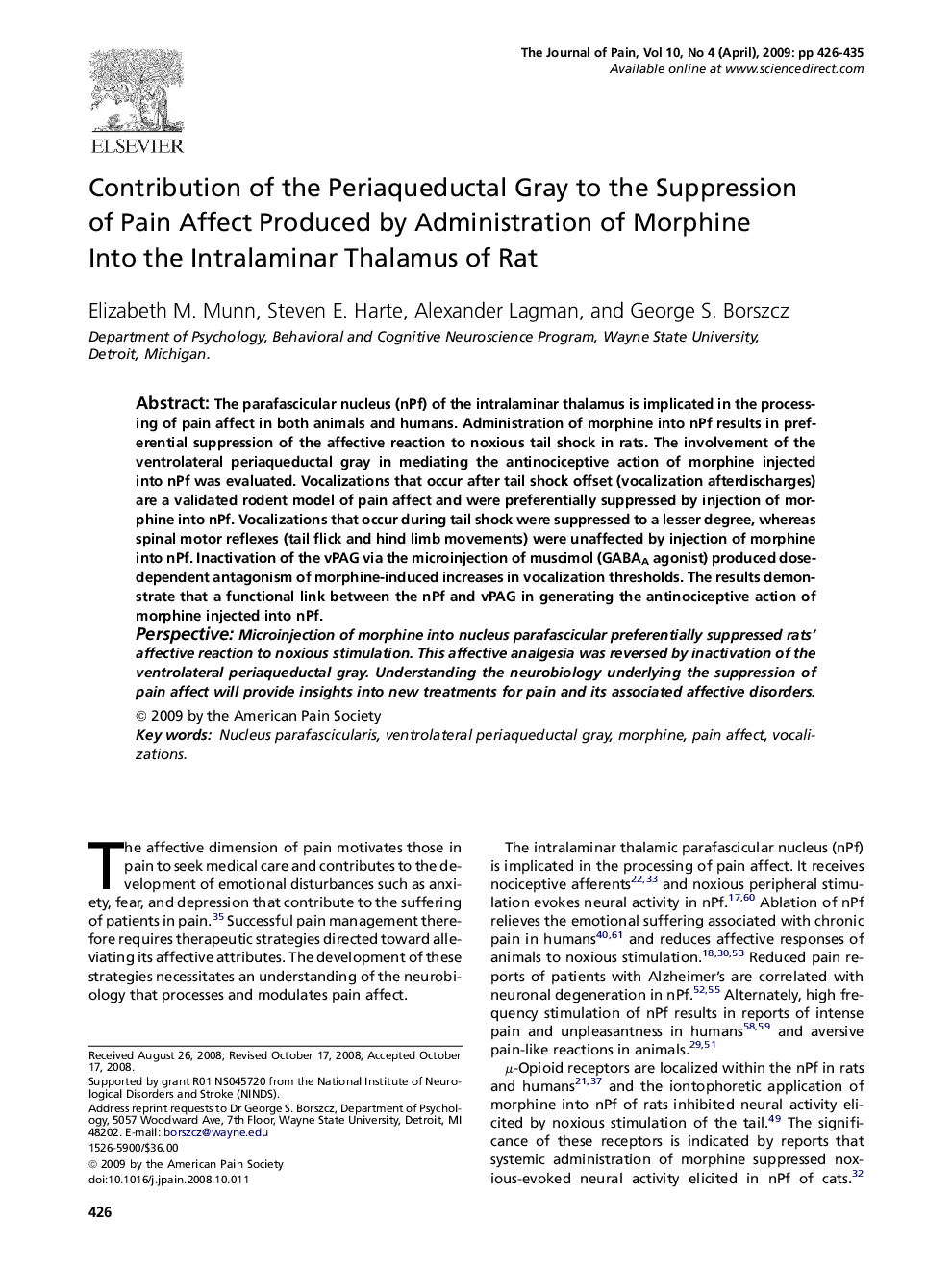| Article ID | Journal | Published Year | Pages | File Type |
|---|---|---|---|---|
| 2732789 | The Journal of Pain | 2009 | 10 Pages |
The parafascicular nucleus (nPf) of the intralaminar thalamus is implicated in the processing of pain affect in both animals and humans. Administration of morphine into nPf results in preferential suppression of the affective reaction to noxious tail shock in rats. The involvement of the ventrolateral periaqueductal gray in mediating the antinociceptive action of morphine injected into nPf was evaluated. Vocalizations that occur after tail shock offset (vocalization afterdischarges) are a validated rodent model of pain affect and were preferentially suppressed by injection of morphine into nPf. Vocalizations that occur during tail shock were suppressed to a lesser degree, whereas spinal motor reflexes (tail flick and hind limb movements) were unaffected by injection of morphine into nPf. Inactivation of the vPAG via the microinjection of muscimol (GABAA agonist) produced dose-dependent antagonism of morphine-induced increases in vocalization thresholds. The results demonstrate that a functional link between the nPf and vPAG in generating the antinociceptive action of morphine injected into nPf.PerspectiveMicroinjection of morphine into nucleus parafascicular preferentially suppressed rats' affective reaction to noxious stimulation. This affective analgesia was reversed by inactivation of the ventrolateral periaqueductal gray. Understanding the neurobiology underlying the suppression of pain affect will provide insights into new treatments for pain and its associated affective disorders.
